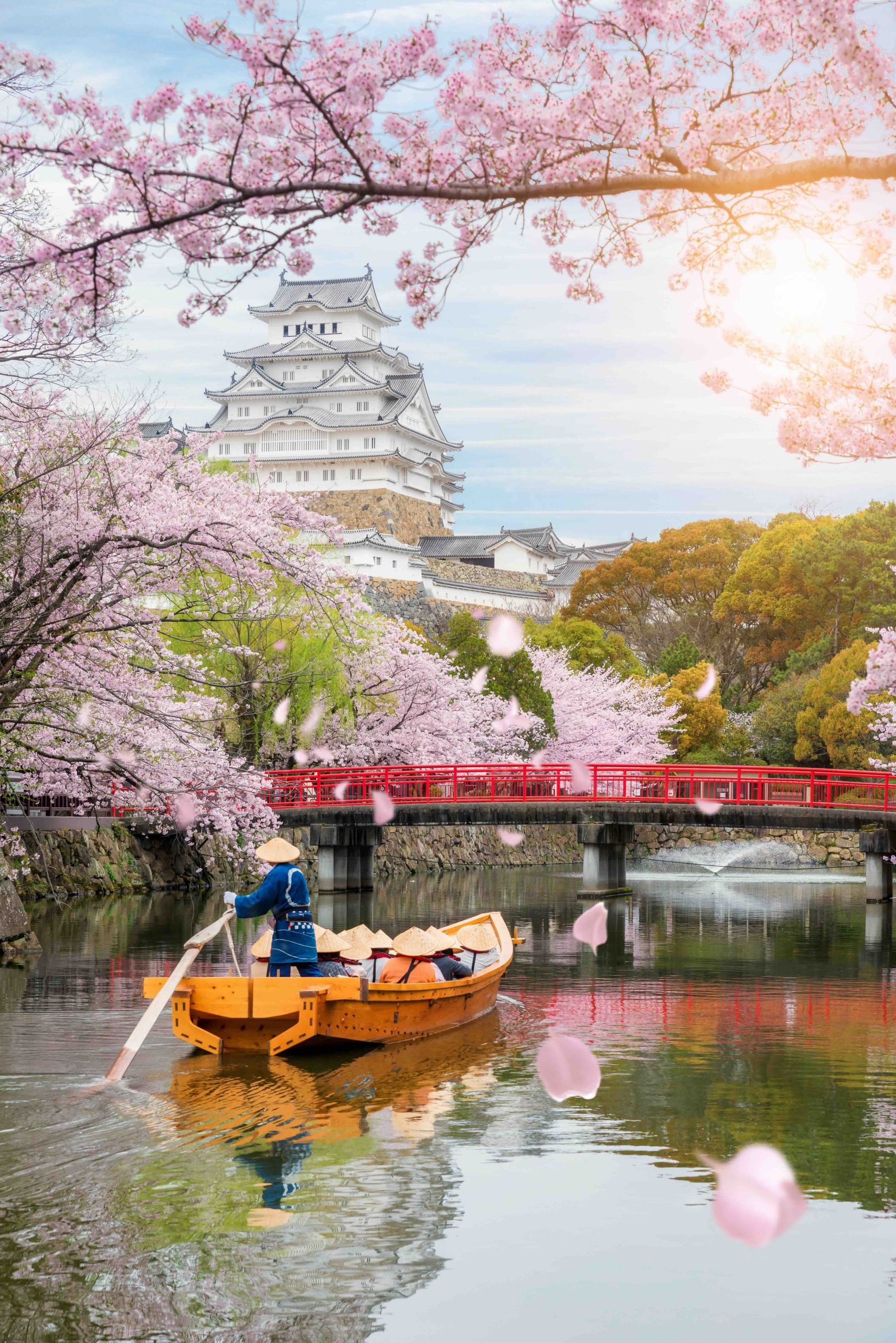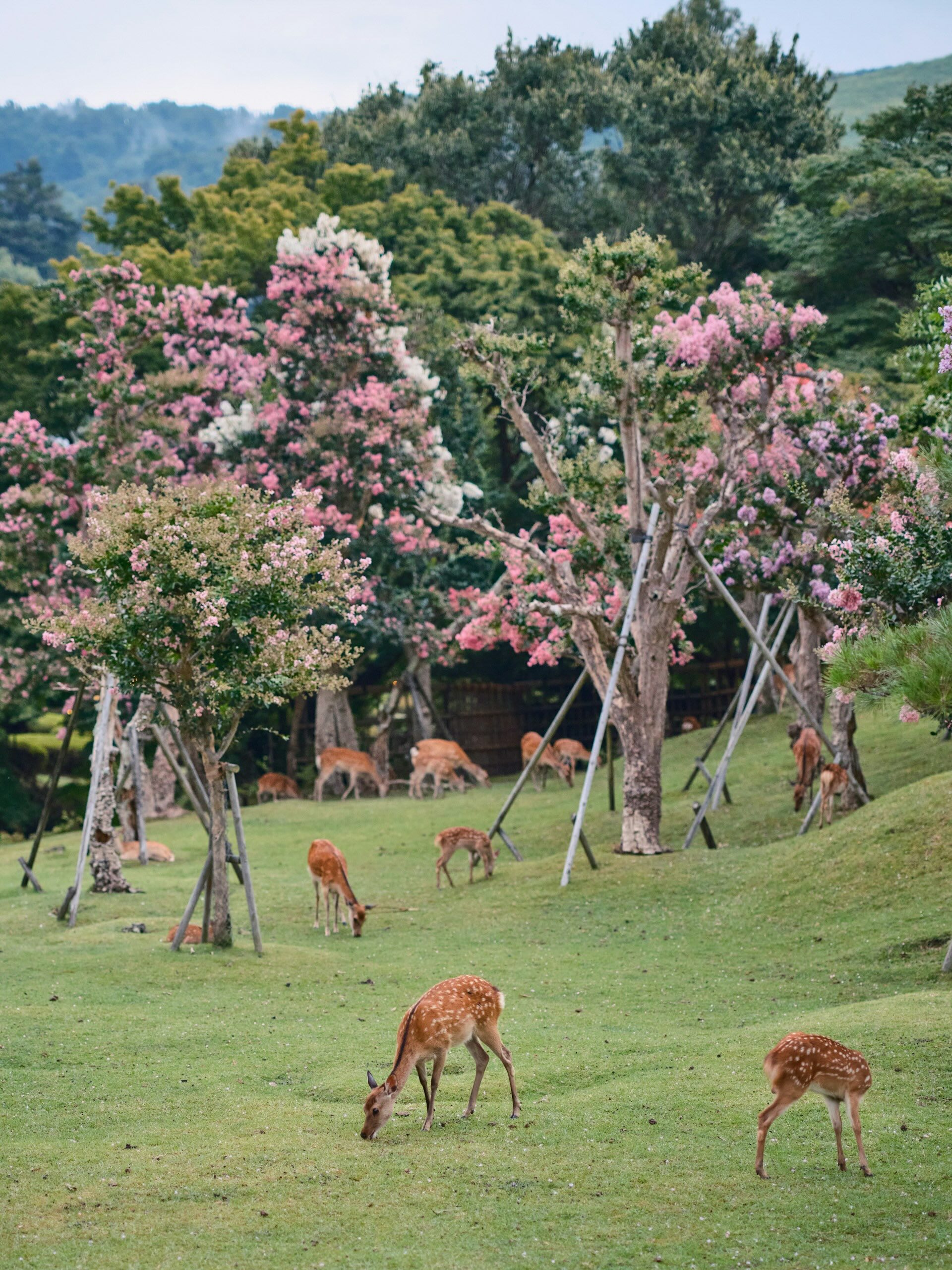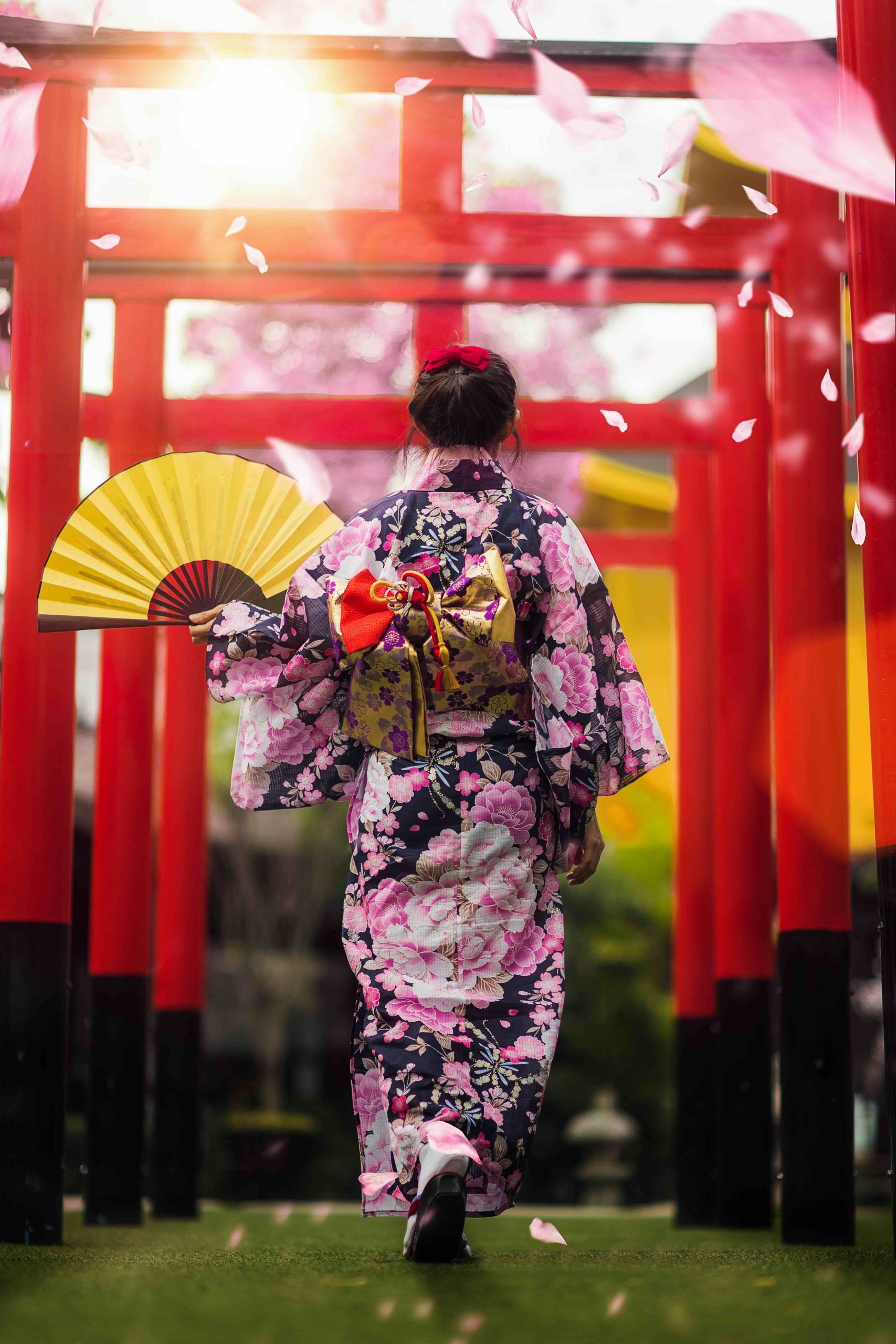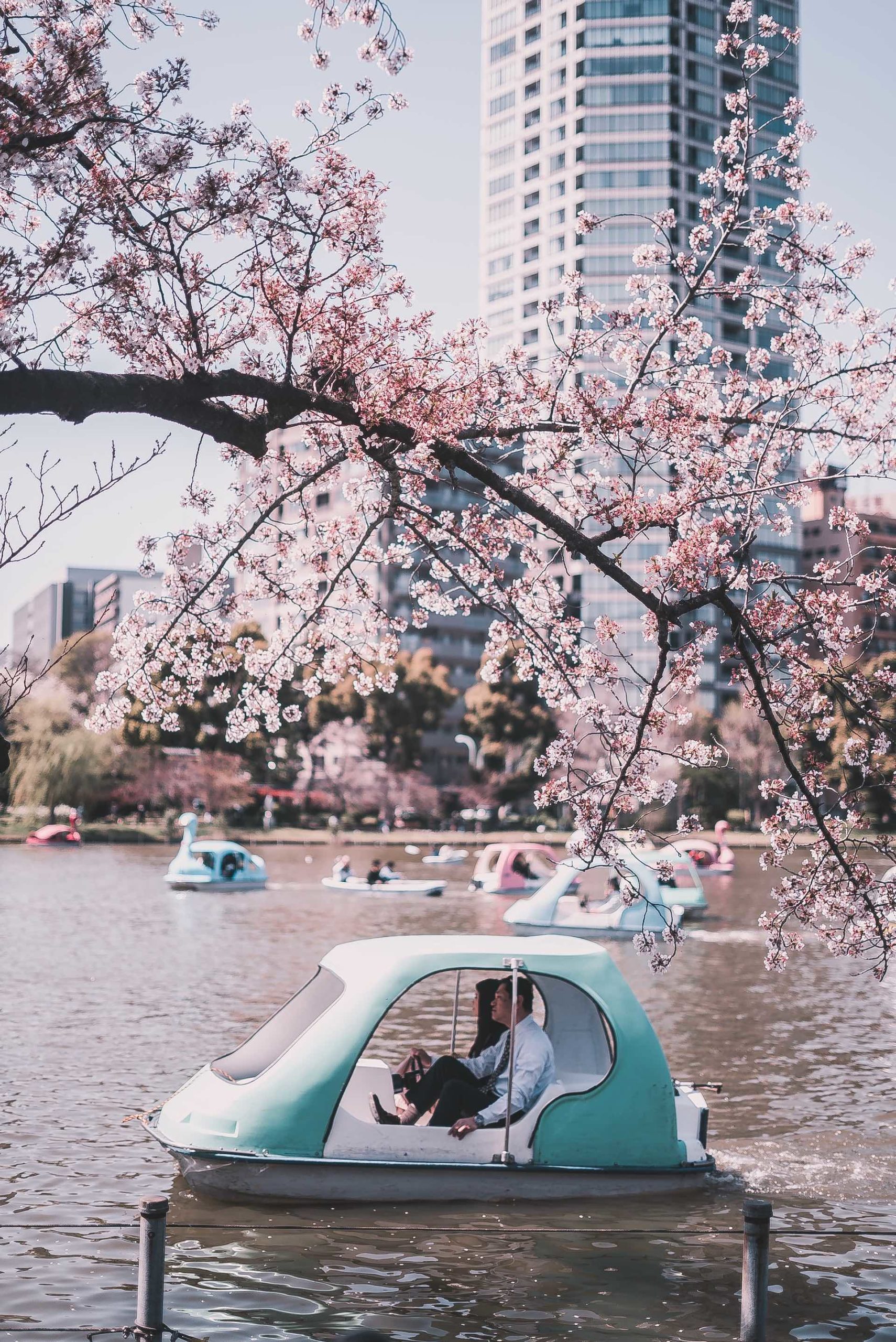While Wales has its daffodils, Turkey its tulips, and India its lotuses, few countries are as deeply intertwined with their national bloom as Japan is with its cherry blossoms. Each spring, the country transforms into a vast sea of pink, with delicate petals creating dreamy backdrops for picnics, photographers, and seasonal delights. Fleeting yet spectacular, cherry blossoms symbolize renewal and resilience, their brief bloom a reminder of life’s impermanence. So significant are these blossoms that Japan employs cutting-edge technology to predict their arrival.
Japan’s cherry blossoms are a spectacle that captivates locals and visitors alike, offering an unforgettable glimpse into the country’s deep-rooted appreciation for nature’s fleeting beauty. Whether you prefer vibrant city parks or serene mountain landscapes, these five destinations promise an unforgettable hanami experience this spring.
1. Japan Mint, Osaka

Himeji Castle is famous cherry blossom viewpoint in Osaka, Japan. Photo: Prasit Rodphan/Shutterstock
Famous not just for producing coins, notes, and medals, the Japan Mint is equally renowned for its cherry trees. With over 300 trees spanning approximately 120 varieties, this iconic site features a 560-meter-long passage draped in pink. The area’s reputation for floral beauty predates its governmental role—centuries ago, visitors flocked to this region along the old Yodo River to witness this magnificent spring display.
Beyond its cherry blossoms, Osaka is known for its vibrant food scene and rich history. Visitors can take a short trip to Himeji Castle, one of Japan’s most stunning and well-preserved feudal castles. A UNESCO World Heritage Site, Himeji Castle is often referred to as the “White Heron Castle” due to its elegant, white appearance. In spring, the castle grounds become a breathtaking spectacle as cherry trees bloom around its historic walls, creating a scene straight out of a fairytale.
2. Mount Yoshino, Nara

Where ancient temples meet friendly deer – Nara Park. Photo: Stephen H/Unsplash
Considered one of Japan’s most spectacular cherry blossom destinations, Mount Yoshino’s breathtaking landscape boasts approximately 30,000 trees. The tradition of planting cherry trees here dates back to when the surrounding Kinpusen-Ji Temple became too crowded, prompting worshippers to replant them in the nearby mountains. The bloom starts at the mountain’s base and gradually ascends, creating a mesmerizing wave of pink across the hillsides.
While in Nara, visitors can also explore Nara Park, home to friendly, free-roaming deer and the awe-inspiring Todai-ji Temple, which houses the Great Buddha statue. The combination of ancient temples, nature, and cherry blossoms creates a surreal, almost mythical atmosphere that perfectly embodies Japan’s harmonious blend of history and natural beauty.
3. The Philosopher’s Path, Kyoto

Fushimi Inari Shrine, a Shinto treasure, stuns with thousands of vibrant Torii gates covering Mount Inari. Photo: Anek Soowannaphoom/Shutterstock
This serene, tree-lined canal pathway links numerous shrines and temples, offering one of Kyoto’s most tranquil cherry blossom experiences. Named after Nishida Kitaro, a renowned philosopher who walked the path in deep contemplation, it stretches from Eikan-Do Temple to the base of Ginkaku-Ji. Dotted with charming cafés, it’s a perfect place to pause and take in the beauty. For an unforgettable experience, visit at sunset when the crowds dissipate, and the trees glow in hues of pink and gold.
Kyoto, known as Japan’s cultural heart, is home to an astonishing 17 UNESCO World Heritage Sites, and its cherry blossoms add an extra layer of magic to this historical city. While exploring the Philosopher’s Path, visitors can also take a short detour to marvel at the breathtaking Fushimi Inari Shrine, famous for its thousands of vermillion torii gates that weave through the forested hills. This sacred site, dedicated to Inari, the Shinto god of rice and prosperity, offers a unique and picturesque experience that blends cultural heritage with natural beauty.
4. Senkoji Park, Hiroshima

Samurai history meets cherry blossom magic at Hiroshima Castle. Photo: @mercijapon
Perched above Onomichi, Senkoji Park is a beloved cherry blossom viewing spot, offering stunning panoramic views of the Seto Inland Sea. Originally built by the chief priest of Senko-Ji Temple in the 19th century, the park is home to over 10,000 cherry trees. It is particularly famous for the Shidare-Zakura, or weeping cherry trees, whose cascading branches frame breathtaking vistas.
For history enthusiasts, a visit to nearby Hiroshima Castle is highly recommended. Originally constructed in the 16th century, the castle was destroyed during World War II but has since been beautifully reconstructed. Surrounded by cherry trees, the castle grounds become a magical sight in spring, with delicate pink petals framing the elegant black-and-white structure. The castle also houses a museum that delves into Hiroshima’s samurai history and feudal past, offering a deeper appreciation of the region’s cultural heritage
5. Ueno Park, Tokyo

Ueno Park, Tokyo. Photo: @reddfrancisco
One of Japan’s oldest and most famous public parks, Ueno Park is a must-visit during cherry blossom season. The trees lining the pathway between the National Museum and Shinobazu Pond typically bloom a few days ahead of others in Tokyo, making them a key indicator for the city’s hanami (flower-viewing) festivities. In the evenings, lanterns illuminate the blossoms, creating an enchanting atmosphere. If you’re lucky, you might even spot geishas in vibrant kimonos, joining in the seasonal celebrations.
Beyond the cherry blossoms, Ueno Park is also home to the famous Ueno Zoo, Japan’s oldest zoo and home to its beloved giant pandas. The park also houses several prominent museums, including the Tokyo National Museum and the National Museum of Nature and Science, making it a cultural hub where visitors can experience both nature and history in one visit. Whether you’re admiring the blooms or exploring the city’s rich heritage, Ueno Park offers an unforgettable springtime experience.












